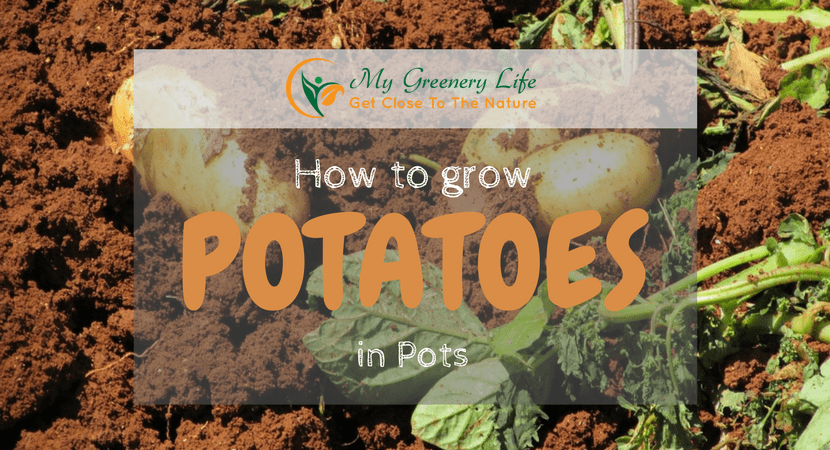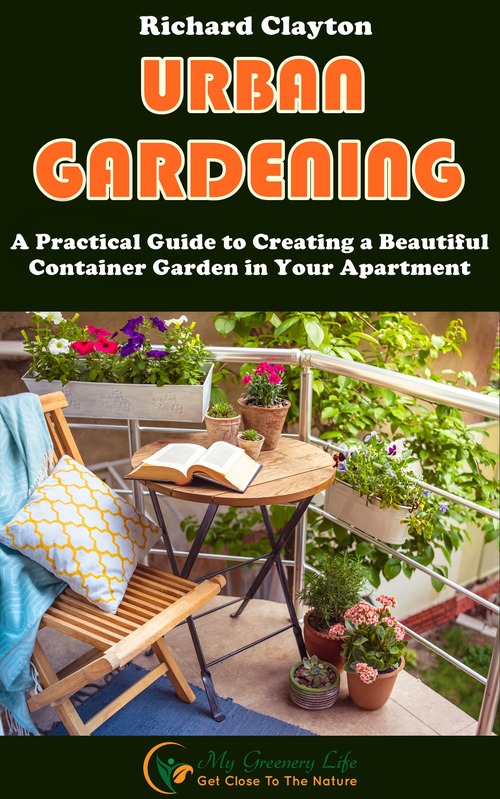Eating a variety of fruits and vegetables on a daily basis is necessary for maintaining both physical and mental health. Among all the different types of veggies, potatoes are quite popular with most people over the world as a staple dietary item. They come with multiple health benefits such as building and strengthening the bones, regulating blood pressure, decreasing the risk of heart disease, cancer and inflammation, preventing constipation, promoting metabolism and improving overall skin texture. Planting potatoes in pots is one clean, simple way of providing yourself and your family with these delicious, nutritious vegetables.
Growing potatoes is not as difficult as you may think, and even if you don’t own a farm or even a garden, you can still have a crop by planting potatoes in pots. Should you want to proceed with the idea of self-supplying healthful potatoes, the following tips should be valuable in your endeavour.
Useful Guidelines for Growing Potatoes in Pots
1. Material Preparation

Material Preparation
Pots or containers: You will need a fairly large fabric pot or container for planting potatoes in pots because potatoes bear their fruit underground. Larger pots will allow for strong root growth and will give you more potatoes to harvest. The best size for the pots is around 10 liters or 2.5 gallons. Make sure that the pots have drainage holes so that the roots will not stand for long periods of time in water. You should prepare as many as pots of this size as you can, depending on the amount of space you have available for growing potatoes in pots.
Potting soil & compost: The ideal growing medium for potatoes is a combination of potting soil, compost and some organic fertilizer. Mix all those components together beforehand, then put 4-6 inches of this mixture into the pot. Keep the rest aside for later.
Seed potatoes: Seed potatoes can be purchased from grocery stores or gardening centers. They look very much like consumable potatoes, but have been specially preserved for replanting. There are various types of potatoes for you to select from, depending on the time of growing and harvesting. Any of them can be used if you are growing potatoes in pots. You can actually grow potatoes all year round, so it’s good to seek advice from the sellers for the right type of seeds. Keep the seeds potatoes in a cool, dark place. An egg tray is handy for placing them in with their eyes facing upwards. Once some eyes start to sprout, move the tray to a well lit, but cool, location for them to develop into dark green shoots. Once this happens, they are ready to be planted.
2. Seeding

Seeding
Before planting, cut the potatoes into segments, with each segment containing 2 to 3 “eyes” (green shoots). Alternatively, you can just plant the whole tuber. If you want to grow the whole seed potatoes, it’s best to trim off some of the smallest eyes and just leave 2-3 of the strongest ones. This helps to ensure stronger grow and a more fruitful harvest. Place the seeds into the pots on top of the 4-6 inch mixture of soil and compost. Remember, the eyes must face upward. Make sure the segments are evenly distributed around the surface of the soil. One would usually plant 3 segments per 12 inch-diameter pot. Cover them with an additional 5 inches of soil. Water them well.
3. Caring for Potato Plants

Caring for Potatoes Plants
Potato plants need at least 6 hours of sunlight per day, so make sure that they are exposed to the sun for a sufficient amount of time. However, exposure to harsh, direct sunlight for an extended period of time does the plants no good, so a place which is partially lit and shaded is ideal for locating your pots. The temperature should range from 40-80°F. As the plants grow, keep adding your soil and compost mixture until the soil level reaches the rim of the pot. Be careful not to damage the plants when you earth up your potatoes, and be sure to leave two thirds of the plants with leaves out of the soil. This soil mounding activity not only conditions growth but also prevents mature tubers from being exposed to the sun and going green.
Moisture is important for strong growth, so don’t forget to water them regularly. During hot or dry weather, you may need to water twice a day, while during rainy or cooler weather you need not water that frequently. Just make sure that the soil stays moist, and is not soggy or dry. A pH test is helpful in determining the best care for the plants. Potatoes develop well in pH-level-6 soil. Based on the test, you can decide whether you need to add manure or compost to decrease the pH, or add a little lime to increase the pH of the soil. Once every two weeks, you’ll need to fertilize the plants. Organic fertilizers are a great choice due to their safety and slow releasing features. If the plants are provided with adequate nutrition, they will produce a richer crop in return. Once you have a little experience with how to grow potatoes in pots, you’ll quickly recognize the signs of malnutrition or lack of water in your plants.
4. Addressing Pests or Diseases
Common enemies of potatoes are flea beetles that eat the plants’ leaves, or tiny insects like aphids that transmit virus diseases and suck juices from the stems. If you only have a few pots, it will be no problem to manually remove those pests if detected. Covering the planting areas with plastic sheeting is also a way of preventing pest attacks. Diseases among your potatoes could result from excessive moisture or unfavorable temperatures. Early blight and late blight are common diseases in potatoes. This causes the leaves to be injured and eventually results in crop failure. You should remove affected plants to prevent the disease from spreading. If you plant certified seeds and mulch properly, the diseases can be prevented. In all these cases, you can use organic pesticides to save the plants if things really get bad or out of control. Your local nurseryman will be able to give you more advice on how to grow potatoes in pots, and how to deal with pests and diseases, if you’re still unsure.
5. Harvesting and Storing

Harvesting and Storing
Potatoes take from 2 to 4 months to become ready for harvesting. You’ll know they are ready when the foliage dies down, or when the leaves and stems turn yellow. Watering should be stopped two weeks before you plan to harvest. The soil should be neither compact nor soggy. To harvest potatoes from pots, you can either pull up the plant or turn the pots over and dump everything out onto the ground and gather up the mature potatoes. This is one of the best moments of growing potatoes in pots- when you see your reward!
Soil clinging to the potatoes should be removed, and your potatoes placed in a cool, dark place for storage. Never put potatoes near bananas or apples, because the ethylene gas that they release will cause your potatoes to spoil. Wash potatoes only when you want to use them, otherwise keep the potatoes as they were when they were dug out- washing them before storage is not a good idea.
There are a variety of ways to enjoy your homegrown potatoes such as fried, baked, roasted, mashed, in salad, in soup, etc. However you cook them, you’ll notice that they taste better than the ones bought from the grocery store as they’re fresh and organic.
Hopefully you now have a little more insight into how to grow potatoes in pots. Follow these simple instructions, and you’re sure to be rewarded with a delicious, healthy crop of your own.
Last Updated on



Reply